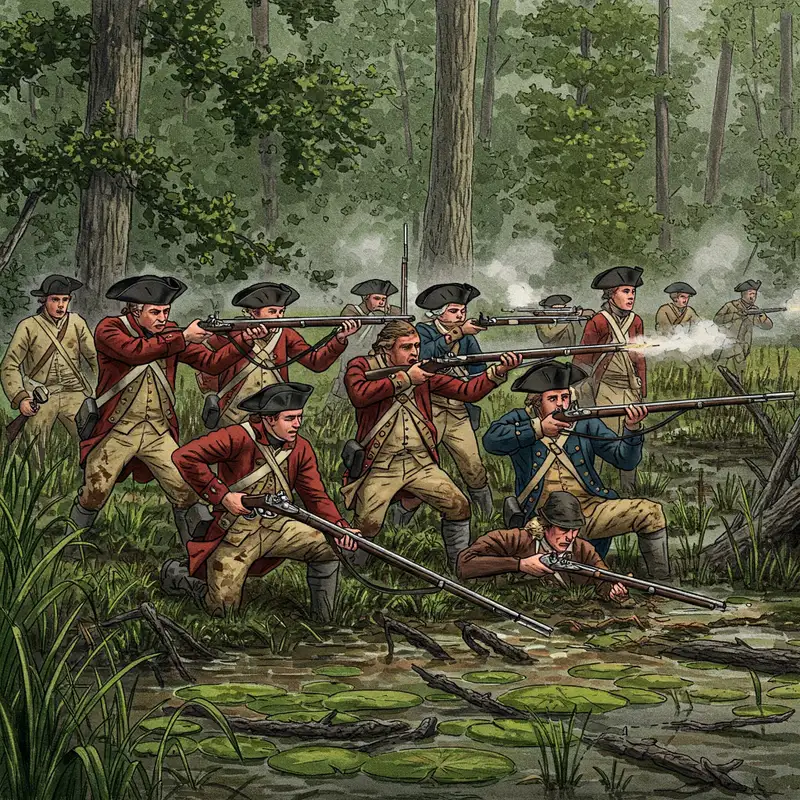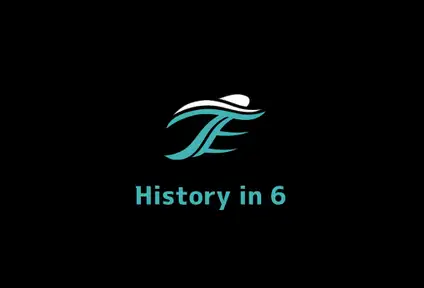Battle of Short Hills
By 1777, the American Revolutionary War was in its second year, and New Jersey had become a central battleground due to its strategic location between British forces in New York and Philadelphia. General George Washington and his Continental Army had established a strong defensive position in the Watchung Mountains near Middlebrook. This elevated position provided a crucial advantage, allowing them to observe British movements and creating a natural barrier against attack.
In the early summer of 1777, General Howe's main goal was to lure Washington's Continental Army into a decisive battle on open ground, where he believed the British’s numerical superiority and weaponry would prevail. Howe’s plan was simple. In mid June, He advanced the majority of his forces from New Brunswick to Somerset Court House (now Millstone). A position that was only eight miles from the American encampment at Middlebrook. This move was a direct challenge to Washington, and Howe's confidence that Washington would take the bait was evident in his five-day stay at Somerset Court House.
Howe’s attempt to lure Washington into a vulnerable position failed. Washington saw through the trap and remained in his fortified position. Washington's intelligence network also indicated that Howe wasn't immediately aiming for Philadelphia, so Washington remained cautious.
Howe realized his plan wasn't working and began to withdraw his forces toward Perth Amboy on June 19th. By June 22nd, the British had left New Brunswick and moved closer to the coast.
Washington, not content to simply watch the British retreat, moved his army closer to monitor Howe. He also sent a detachment of 2,500 men under Lord Stirling to Scotch Plains to harass the retreating British and protect his left flank.
Howe, seeing an opportunity to attack Stirling's isolated force, devised a plan. His goal was to cut off Washington's retreat to the Watchung Mountains, forcing a decisive battle.
Howe launched a surprise attack at 1:00 a.m. on June 26, sending two columns of troops from Perth Amboy towards Stirling's position. The first, with approximately 5,000 soldiers, was led by Lieutenant General Charles Cornwallis and advanced westward through Woodbridge. The second, commanded by Major General John Vaughan and accompanied by General Howe, moved towards Bonhamton before turning north towards Scotch Plains.
Cornwallis's column encountered a detachment of about 150 riflemen, led by Captain James Dark and belonging to Daniel Morgan's corps. This initial skirmish acted as an early warning for the American forces, allowing the main body time to prepare. Although significantly outnumbered, Dark's patrol resisted the British advance for approximately half an hour before a bayonet charge forced them to retreat up Oak Tree Road.
Lord Stirling, alerted to the situation, sent around 700 Pennsylvania German volunteers under Brigadier General Thomas Conway to support Dark's men. At about 8:30 a.m., Conway's brigade, along with Dark's retreating riflemen and local militia, engaged with Cornwallis's main column on Oak Tree Road.
The sounds of the early morning skirmish reached General Washington, who immediately recognized the seriousness of the situation. He ordered alarm guns to be fired, signaling the main Continental Army to quickly withdraw to the safer, higher ground at Middlebrook. Washington knew that Stirling's detachment would take the main force of the initial British attack, and their sacrifice would be essential in allowing the main army to escape.
For Lord Stirling’s part as an experienced military man he quickly assembled approximately 1,000 men from the New Jersey Brigade. Combined with other units, his total force numbered around 1,798 men. Even though they were facing a much larger British force, estimated to be between 11,000 and 16,000 soldiers, Stirling was prepared to take a stand along Tingley Lane and Rahway Avenue, close to Ash Swamp. American artillery had been strategically placed to the north on higher ground, ready to fire on the approaching British.
The early morning air was filled with the sounds of battle as cannons roared and muskets cracked. The Americans initially surprised the British with their concealed artillery, inflicting casualties and disrupting their advance. A Hessian battalion tried to outflank the Americans but was forced back by grapeshot from the American cannons.
The fighting intensified and devolved into brutal hand-to-hand combat around the four French cannons that the Americans had deployed. The British charged with fixed bayonets up a hill, eventually capturing three of the American cannons. Major Benjamin Tallmadge later recounted that these cannons were taken, briefly retaken by the Americans, and ultimately lost again, highlighting the fierce and fluctuating nature of the two-hour engagement.
Surrounded by a much larger force and facing a Hessian flanking maneuver, the Americans were forced to retreat toward Westfield. They used Ash Swamp for cover, fighting as they withdrew. The intense heat of the June day added to the harsh conditions of the battle and caused many British soldiers to succumb to exhaustion. This extreme heat ultimately forced the British to stop their pursuit in Westfield, allowing Lord Stirling to retreat in an orderly fashion, leading his remaining troops back to the American base at Middlebrook.
During Stirling's retreat to Middlebrook, a messenger alerted General Washington of Howe's proximity, prompting Washington to withdraw his main army further into the hills for better defense. Later, General Howe personally inspected Washington's new lines but determined that the American position was too strong to attack and withdrew.
The Battle of Short Hills resulted in casualties on both sides, but the exact numbers are unknown. American estimates range from 12 killed, 50 wounded, and 50 missing/captured, to around 100 killed and wounded, and 70 captured. British sources reported lower casualty figures than the Americans with 6 killed and 30 wounded. Both sides acknowledged the loss of three American cannons.
The following morning, on June 27th, the British forces marched toward Rahway and set up camp on the south side of the Rahway River, continuing their withdrawal from the Short Hills area. By June 30th, General Howe decided to abandon his New Jersey campaign altogether, evacuating his troops from Perth Amboy to Staten Island. This marked a significant moment, as it was the first time since 1776 that New Jersey was free of a substantial British occupying force.
Despite the American retreat and higher casualties, the Battle of Short Hills was a strategic victory for the Americans. Lord Stirling's determined resistance against a much larger British force gave General Washington the time he needed to retreat with his main army to the safety of the Watchung Mountains at Middlebrook. The battle effectively stopped the British offensive in New Jersey and forced General Howe to abandon his attempt to engage Washington's army in a major land battle.
Howe's failure and withdrawal did not signal an end to British ambitions in the region. His army soon left Staten Island on ships, setting sail for Philadelphia and shifting the focus of the war to the American capital.

